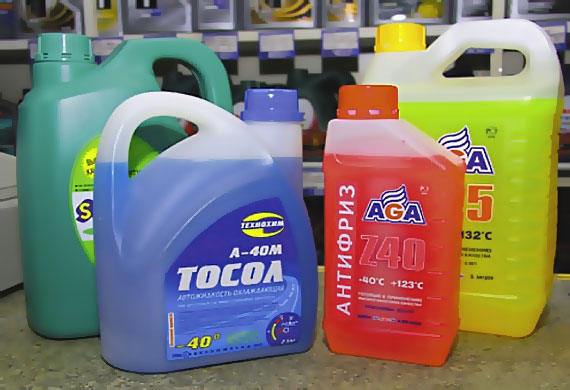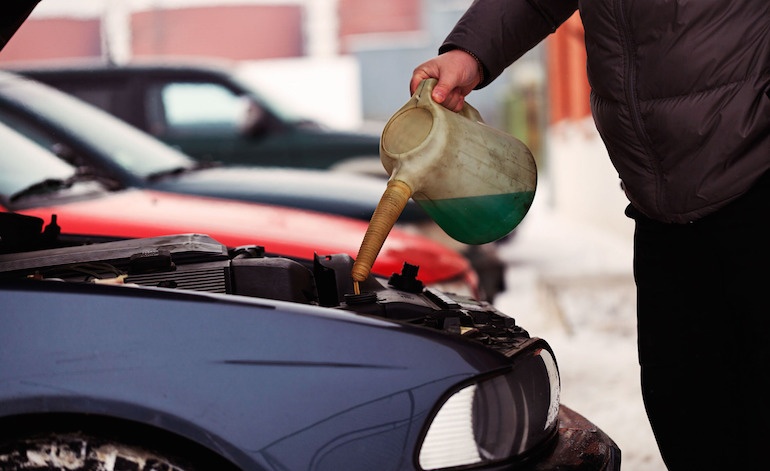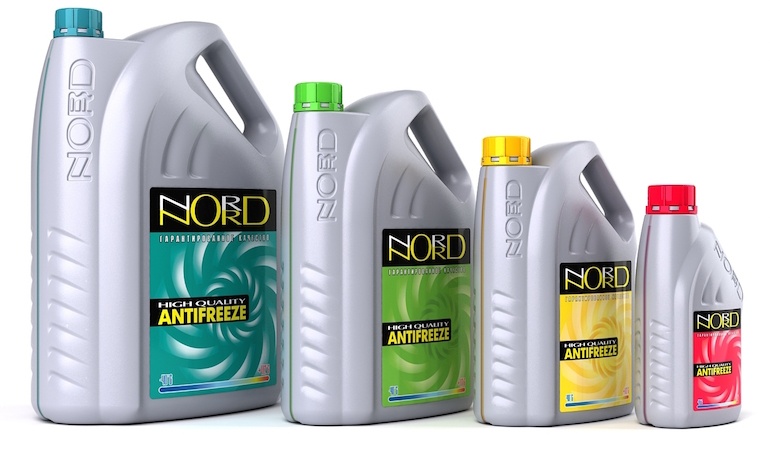
What is the difference between antifreeze and antifreeze? What's better? Can they be mixed?
When we buy a car, we want it to last as long as possible. The service life depends primarily on the operating conditions and the quality of service.
Technological fluids greatly affect the quality of operation of all engine systems. Not the last role is played by the cooling system, thanks to which the engine maintains the desired temperature level.
If earlier, at the dawn of the automotive industry, car engines were made of cast iron and brass, then ordinary distilled water could be poured into radiators. And in winter, ethylene glycol or alcohol was added to this water so that ice would not form in the radiator. However, for modern cars, such a mixture will be like death, because it will provoke corrosion processes inside the engine. Therefore, chemists began to search for a liquid that would not lead to metal corrosion.

This is how automotive antifreeze was invented. Similar studies were carried out in the Soviet Union, where in the 70s they managed to get their own antifreeze formula - Tosol.
From this we can draw the following conclusions:
- antifreeze and antifreeze are liquids that do not freeze at low temperatures;
- antifreeze - this name is used all over the world;
- antifreeze is a purely Russian product intended for cars manufactured in the USSR and modern Russia.
Main differences in chemical composition
The most important difference is what substances are included in antifreeze and antifreeze.
Antifreeze contains the main basic components - water and an anti-freeze additive ethylene glycol. Water is used to deliver this chemical composition to all elements of the engine, ethylene glycol prevents water from freezing at low temperatures. It also contains salts of inorganic acids. - phosphates, nitrates, silicates, which are designed to protect the metal from corrosion. The class of antifreeze depends on which acid salts are used and what percentage of antifreeze additives - that is, the lower temperature limit of freezing.
Antifreeze is also made up of water and ethylene glycol. Glycerin and technical alcohol are also added to it (which is why you can’t drink antifreeze). But the most important difference is that there are no salts of inorganic substances in antifreeze; organic saltswhich greatly improves its performance.

Operating principle
Since any metal is afraid of contact with water, both antifreeze and antifreeze form a thin protective layer on the surface of the metal elements of the engine and cooling system that prevents contact between water and iron. However, there are some differences in this.
Antifreeze circulates through the system and forms a thin film half a millimeter thick on all internal metal surfaces. Because of this film, heat transfer is disturbed, respectively, the engine needs more fuel. This is one of the reasons why fuel consumption increases in winter, we have already touched on this topic on our autoportal Vodi.su.
The presence of silicate and nitrite salts leads to the fact that they precipitate, a fine gel-like slurry is formed, which gradually clogs the radiator cells.
Antifreeze needs to be changed quite often - every 40-50 thousand kilometers, it cannot last longer, since the protective film is destroyed under the influence of high temperatures and the engine is threatened with corrosion. Antifreeze begins to boil at temperatures above 105-110 degrees.
Antifreeze works on the same principle, but with the difference that the protective film appears only on those elements that are susceptible to corrosion, respectively, the fuel consumption of those drivers pouring antifreeze does not increase so much. Also, antifreeze does not give such a precipitate, it does not need to be changed so often, the liquid does not lose its properties with a run of over 200 thousand kilometers. When boiling, antifreeze does not form foam and flakes that clog the radiator. Yes, and it boils at a temperature of 115 degrees.

That is, we see that if you choose between antifreeze and antifreeze, then preference should be given to the latter.
But such a factor as the price plays against him - a 5-liter canister of antifreeze costs a penny, while significant amounts have to be paid for antifreeze.
True, there are a lot of fakes on this market: if you see inscriptions like “Antifreeze-Silicate”, or “Antifreeze-Tosol”, then ask the consultant the main difference between antifreeze and antifreeze - salts of organic and inorganic acids.
Silicates are an extensive group of minerals that can in no way be related to organic substances, that is, they are trying to sell you antifreeze under the guise of antifreeze.
Remember also that antifreeze does not need to be diluted with distilled water. Its freezing temperature is usually in the region from minus 15 to minus 24-36 degrees. Antifreeze, on the other hand, can be sold both in the form of a ready-made mixture and in the form of a concentrate. If you buy concentrated antifreeze, then it must be diluted in a one-to-one ratio, in which case the freezing point will be -40 degrees.

Antifreeze is not advisable to buy for foreign-made cars. For example, Toyota pours red antifreeze.
You can only mix antifreeze of the same color, in no case should you mix antifreeze with antifreeze. Before adding antifreeze, all previous residues must be drained.
In order for the machine to last as long as possible without breakdowns, buy only types of antifreeze or antifreeze recommended by the manufacturer.
Loading…